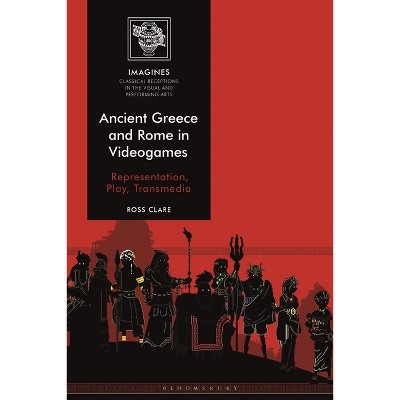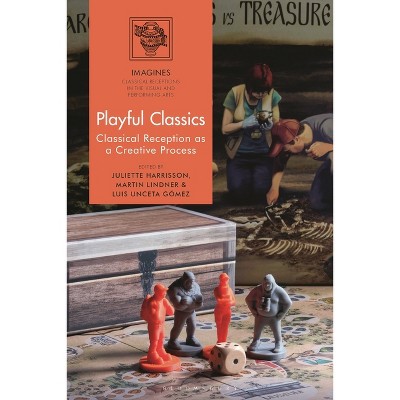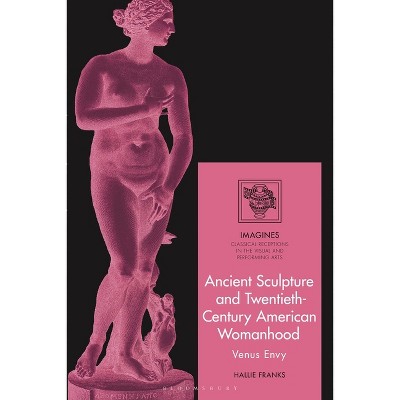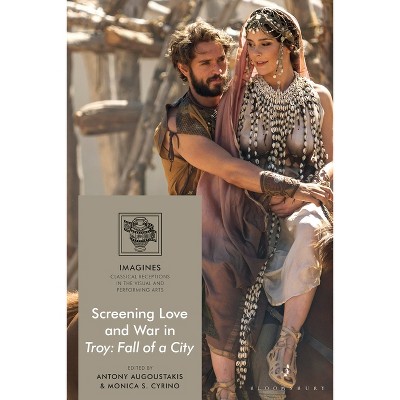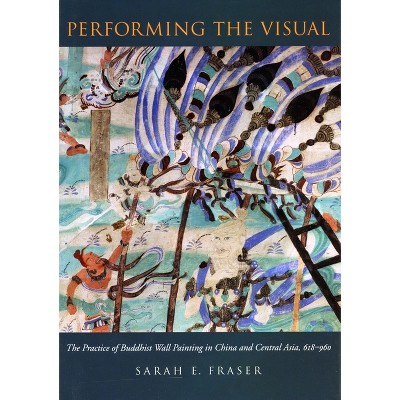Pompeii in the Visual and Performing Arts - (Imagines - Classical Receptions in the Visual and Performing) by Mirella Romero Recio (Paperback)

$39.99 when purchased online
Target Online store #3991
About this item
Highlights
- This volume examines the influence that Pompeii and, to a lesser extent, Herculaneum had on the visual and performing arts in Spain and countries across South America.
- About the Author: Mirella Romero Recio is Professor of Ancient History at the University Carlos III of Madrid, Spain.
- 256 Pages
- Art, Subjects & Themes
- Series Name: Imagines - Classical Receptions in the Visual and Performing
Description
About the Book
"This volume examines the influence that Pompeii and, to a lesser extent, Herculaneum had on the visual and performing arts in Spain and countries across South America. Covering topics from architecture, painting and decorative arts to theatre, dance and photography, the reader will gain insight into the reception of classical antiquity through the analysis of the close cultural ties between both sides of the Atlantic, in the past and the present. Each contribution has been written by a specialist researcher participating in the project, 'The Reception and Influence of Pompeii and Herculaneum in Spain and America', funded by the Spanish Ministry of Science and Innovation (PGC2018-093509-B-I00 Ministry of Science and Innovation/AEI/ERDF/EU). Pompeii in the Visual and Performing Arts begins by examining the influence of Pompeiian architecture in Spain in paintings that depict scenes inspired by Roman scenes and also buildings modelled on those of Pompeii. Next, the influence of Pompeii crosses the Atlantic to Mexico with a study of the archaeological site's influence on the visual and performing arts. An exploration of the elitist use of the ancient past in architecture is seen in Chilean architecture, which leads onto an investigation of the new art styles that emerged in the 19th century. Later chapters look into the influence of the ancient frescoes and the use of modern plaster casts of statues. The final chapters are devoted to comics and photography, which also make a study of the places in Latin America nicknamed 'Pompeii' in the 20th and 21st centuries"--Book Synopsis
This volume examines the influence that Pompeii and, to a lesser extent, Herculaneum had on the visual and performing arts in Spain and countries across South America. Covering topics from architecture, painting and decorative arts to theatre, dance and photography, the reader will gain insight into the reception of classical antiquity through the analysis of the close cultural ties between both sides of the Atlantic, in the past and the present. Each contribution has been written by a specialist researcher participating in the project, 'The Reception and Influence of Pompeii and Herculaneum in Spain and Ibero-America', funded by the Spanish Ministry of Science and Innovation (PGC2018-093509-B-I00 Ministry of Science and Innovation/AEI/ERDF/EU).Pompeii in the Visual and Performing Arts begins by examining the influence of Pompeiian architecture in Spain in paintings that depict scenes inspired by Roman scenes and also buildings modelled on those of Pompeii. Next, the influence of Pompeii crosses the Atlantic to Mexico with a study of the archaeological site's influence on the visual and performing arts. An exploration of the elitist use of the ancient past in architecture is seen in Chilean architecture, which leads onto an investigation of the new art styles that emerged in the 19th century. Later chapters look into the influence of the ancient frescoes and the use of modern plaster casts of statues. The final chapters are devoted to comics and photography, which also make a study of the places in Latin America nicknamed 'Pompeii' in the 20th and 21st centuries.
Review Quotes
"This is an engaging and valuable volume, comprising chapters on recurring themes of architectural influence, cultural politics, and elite materiality ... I highly recommend this to anyone interested in the impact of classical traditions on modern architecture and visual arts, as well as to scholars working on national identities and Latin America's efforts to distance itself from its colonial past." --CADMO: Journal for Ancient History
About the Author
Mirella Romero Recio is Professor of Ancient History at the University Carlos III of Madrid, Spain. She is the principal researcher in the project, 'The Reception and Influence of Pompeii and Herculaneum in Spain and Ibero-America', which is funded by the Spanish Ministry of Science and Innovation. She has published two books in Spanish: Ecos de un Descubrimiento: Viajeros Españoles en Pompeya 1748-1936 (2012) and Pompeya: Vida, muerte y Resurrección de la Ciudad Sepultada por el Vesubio (2010).Dimensions (Overall): 9.21 Inches (H) x 6.14 Inches (W) x .53 Inches (D)
Weight: .79 Pounds
Suggested Age: 22 Years and Up
Number of Pages: 256
Genre: Art
Sub-Genre: Subjects & Themes
Series Title: Imagines - Classical Receptions in the Visual and Performing
Publisher: Bloomsbury Academic
Theme: General
Format: Paperback
Author: Mirella Romero Recio
Language: English
Street Date: December 26, 2024
TCIN: 1001269221
UPC: 9781350277922
Item Number (DPCI): 247-30-7629
Origin: Made in the USA or Imported
If the item details above aren’t accurate or complete, we want to know about it.
Shipping details
Estimated ship dimensions: 0.53 inches length x 6.14 inches width x 9.21 inches height
Estimated ship weight: 0.79 pounds
We regret that this item cannot be shipped to PO Boxes.
This item cannot be shipped to the following locations: American Samoa (see also separate entry under AS), Guam (see also separate entry under GU), Northern Mariana Islands, Puerto Rico (see also separate entry under PR), United States Minor Outlying Islands, Virgin Islands, U.S., APO/FPO
Return details
This item can be returned to any Target store or Target.com.
This item must be returned within 90 days of the date it was purchased in store, shipped, delivered by a Shipt shopper, or made ready for pickup.
See the return policy for complete information.






